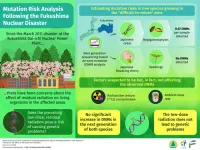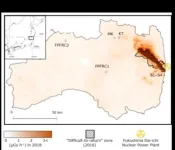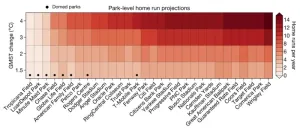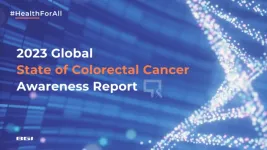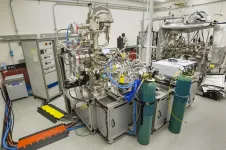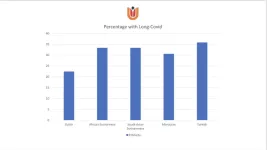Study assesses risk of mutation due to residual radiation from the Fukushima nuclear disaster
Hereditary risk assessment of Japanese tree species suggests that mutation rates do not significantly increase under the remnant low-dose-rate radiation
2023-04-07
(Press-News.org) Ionizing radiation from nuclear disasters are known to be harmful to the natural environment. The Fukushima Dai-ichi Nuclear Power Plant meltdown that occurred in 2011 is a prominent example of such a disaster in recent memory. Even a decade after the incident, concerns remain about the long-term effects of the radiation. In particular, it is not clear how the residual low-dose radiation might affect living organisms at the genetic level.
The brunt of the disaster is usually borne by the floras inhabiting the contaminated areas since they cannot move. This, however, makes them ideal for studying the effects of ionizing radiation on living organisms. Coniferous plants such as the Japanese red pine and fir have, for instance, shown abnormal branching after the Fukushima disaster. However, it is unclear whether such abnormalities reflect genetic changes caused by the prevailing low-dose-rate radiation in the area.
To address this concern, a team of researchers from Japan developed a rapid and cost-effective method to estimate the mutation risks caused by low-dose-rate radiation (0.08 to 6.86 μGy h-1) in two widely cultivated tree species of Japan growing in the contaminated area. They used a new bioinformatics pipeline to evaluate de novo mutations (DNMs), or genetic changes/mutations that were not present earlier or inherited, in the germline of the gymnosperm Japanese cedar and the angiosperm flowering cherry. The study, led by Dr. Saneyoshi Ueno from the Forestry and Forest Products Research Institute, was recently published in the journal Environment International and involved contribution from Dr. Shingo Kaneko from Fukushima University. “People living in the affected areas are worried and need to feel safe in their daily lives,” says Dr. Kaneko when asked about the motivation behind their study. “We wanted to clear the air of misinformation regarding the biological consequences of the nuclear power plant accident.”
For sampling Japanese cedar, the team first measured the radioactive cesium (137Cs) levels of the cone-bearing branches. The cones were then used to collect the seeds, which were germinated, and the remaining megagametophytes were used for DNA extraction. For the Japanese flowering cherry, an artificial crossing experiment was performed, followed by seed collection and DNA extraction. The samples were subjected to restriction site-associated DNA sequencing, which compared the DNA sequences present in the offspring seed to those present in the parent. The DNMs were detected using a bioinformatic pipeline developed by the authors.
Interestingly, the team found no DNMs for the Japanese flowering cherry and an average of 0.67 DNMs per megagametophyte sample for the Japanese cedar in the “difficult-to-return” zone. Moreover, the 137Cs concentration and ambient dose rate did not have any effects on the presence or absence of DNMs in Japanese cedar and flowering cherry. These findings suggested that the mutation rate in trees growing in contaminated areas did not increase significantly owing to the ambient radiation. “Our results also suggest that mutation rates vary across lineages and are largely influenced by the environment,” highlights Dr. Ueno.
The study is the first to use DNM frequency for assessing the after-effects of a nuclear disaster. With the number of nuclear power plants increasing globally, there is a growing risk of nuclear accidents. When asked about their study’s future implications, Dr. Ueno remarks, “The method developed in our study can not only help us better understand the relationship between genetics and radiation but also perform hereditary risk assessments for nuclear accidents quickly.”
For now, this is as reassuring as it can get.
END
ELSE PRESS RELEASES FROM THIS DATE:
2023-04-07
A team led by Masaya Hagiwara of RIKEN national science institute in Japan has developed an ingenious device, using layers of hydrogels in a cube-like structure, that allows researchers to construct complex 3D organoids without using elaborate techniques. The group also recently demonstrated the ability to use the device to build organoids that faithfully reproduce the asymmetric genetic expression that characterizes the actual development of organisms. The device has the potential to revolutionize the way we test drugs, and could also provide insights into how tissues develop and lead to ...
2023-04-07
Dan Răzvan Popoviciu new book New Worlds: Colonizing Planets, Moons and Beyond (published by Bentham Science) explores the possibilities of transforming humanity into a multi-planetary species, while also sounding an alarm about our long-term future. It emphasizes the importance of efficiently using Earth's resources and expanding beyond the planet's borders.
In the book, Popoviciu discusses how various planets, moons, and asteroids in the Solar System can provide important resources and become potential new home worlds for humans. The author goes beyond simple colonization and discusses solutions for terraforming ...
2023-04-07
In the history of Major League Baseball, first came the low-scoring dead-ball era, followed by the modern live-ball era characterized by power hitters such as Babe Ruth and Henry "Hank" Aaron. Then, regrettably, was the steroid era of the 1990s and early 2000s.
Now, could baseball be on the cusp of a "climate-ball" era where higher temperatures due to global warming increasingly determine the outcome of a game?
A new Dartmouth College study suggests it may be. A report in the Bulletin of the ...
2023-04-07
To uncover attitudes and the biggest challenges facing colorectal cancer (CRC) awareness and screening, BGI Genomics today released its State of Colorectal Cancer Awareness Report, marking the first-ever global survey report on the world's third most common cancer. This report is released on World Health Day, April 07, 2023, in line with achieving Health For All, and seeks to motivate action to tackle the health challenges of today and tomorrow.
This ...
2023-04-07
Two Smidt Heart Institute experts have been honored for their contributions to medical research by being inducted into select medical societies, while a third expert has been selected for a leadership position.
Cardiologist, echocardiographer and clinician-scientist Susan Cheng, MD, director of Cardiovascular Population Sciences in the Smidt Heart Institute and the Erika J. Glazer Chair in Women’s Cardiovascular Health and Population Science, has been elected to the American Society for Clinical Investigation (ASCI) Council. ASCI is regarded as the most prestigious ...
2023-04-07
People around the globe are so dependent on the internet to exercise socio-economic human rights such as education, healthcare, work, and housing that online access must now be considered a basic human right, a new study reveals.
Particularly in developing countries, internet access can make the difference between people receiving an education, staying healthy, finding a home, and securing employment – or not.
Even if people have offline opportunities, such as accessing social security schemes or finding housing, they are at a comparative ...
2023-04-07
UPTON, NY— Researchers at Binghamton University led research partnering with the Center for Functional Nanomaterials (CFN)—a U.S. Department of Energy (DOE) Office of Science User Facility at Brookhaven National Laboratory—to get a better look at how peroxides on the surface of copper oxide promote the oxidation of hydrogen but inhibit the oxidation of carbon monoxide, allowing them to steer oxidation reactions. They were able to observe these quick changes with two complimentary spectroscopy ...
2023-04-07
New research led by the University of East Anglia (UEA) suggests a way to greatly improve the outcomes of biodiversity conservation efforts globally.
Scientists from UEA, the RSPB and Natural England, propose that biodiversity auditing should be integral to the ongoing development of regionally-targeted conservation plans, such as the Local Nature Recovery Strategies (LNRS) established by the UK Environment Act 2021.
It follows work conducted with two conservation projects in the East of England - one in North Norfolk and another in the Brecks - using this approach to guide conservation locally.
A biodiversity ...
2023-04-07
All prominent migrant groups in the Netherlands are suffering more from long-covid than the native Dutch population, research from Amsterdam UMC has found. The study, published today, in The Lancet Regional Health – Europe, shows that in some groups the rates of long-covid are up to 50% larger than in the Dutch population. Resulting in many migrant groups “suffering in silence,” in the words of senior author Professor Charles Agyemang.
COVID-19 has had a devastating impact on vulnerable communities, particularly people from ethnic minorities and migrant backgrounds. Research from Amsterdam UMC already found that these populations ...
2023-04-07
UNIVERSITY PARK, Pa. — People often complain about the occasional misfires of automated features, such as autocorrect, but users generally enjoy interacting with the tools, according to researchers. They added that focusing on certain benefits of automated features may help developers build automated tools that people use more and complain about less.
In a study, researchers said that users appreciate the convenience and control of automated features, which also include YouTube’s autoplay and Google Gmail’s smart compose. People listed the technology’s ...
LAST 30 PRESS RELEASES:
[Press-News.org] Study assesses risk of mutation due to residual radiation from the Fukushima nuclear disaster
Hereditary risk assessment of Japanese tree species suggests that mutation rates do not significantly increase under the remnant low-dose-rate radiation
